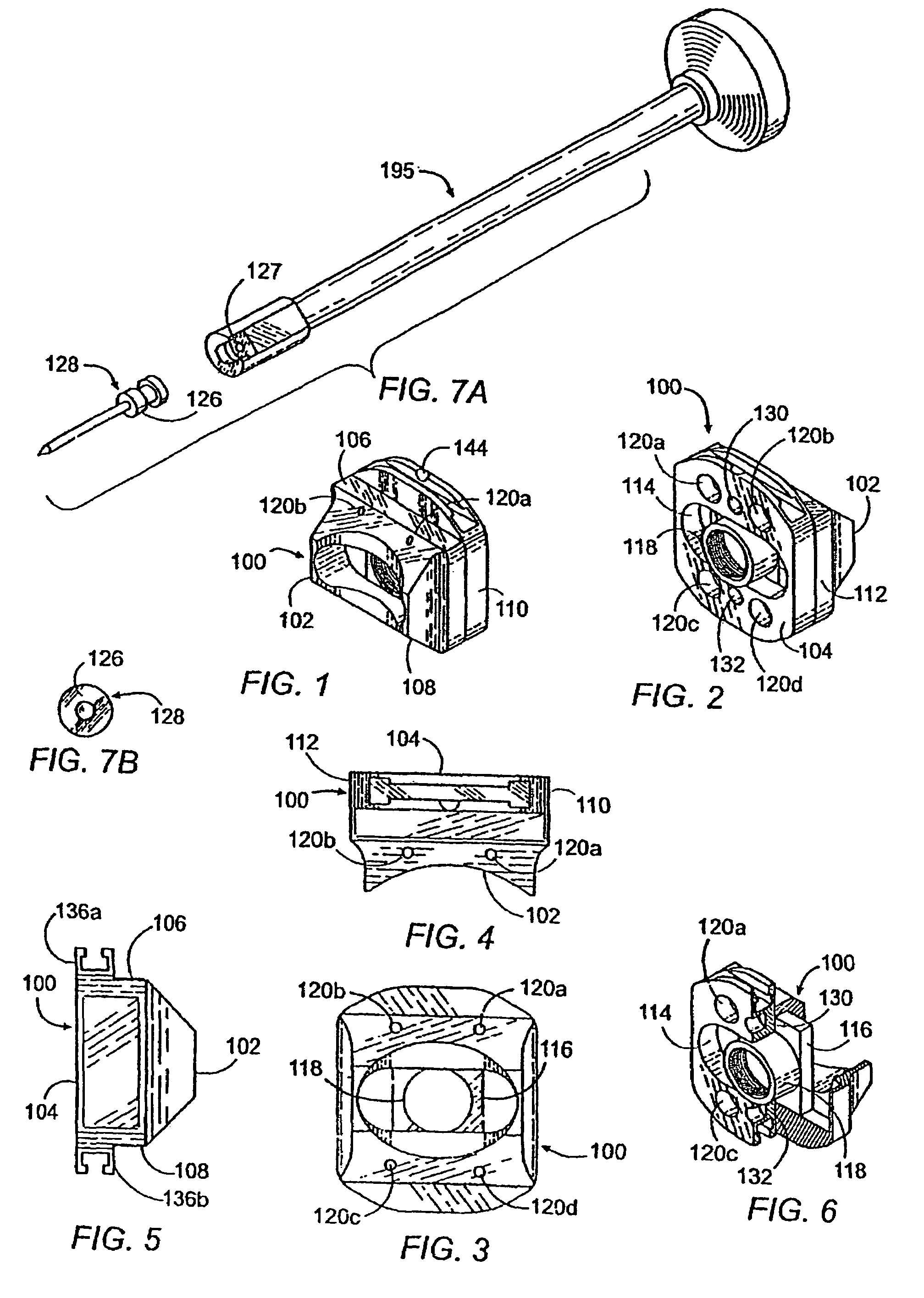Bone removal device
a bone graft and implant technology, applied in the field of bone grafting devices, can solve the problems of loss of both support areas, compromise the quality of the fusion construct, and it is not possible to shape such grafts, and achieve the effect of maximum stability of the graft/implan
- Summary
- Abstract
- Description
- Claims
- Application Information
AI Technical Summary
Benefits of technology
Problems solved by technology
Method used
Image
Examples
Embodiment Construction
[0126]Referring to FIGS. 1-6, the instrumentation of the present invention comprises a milling block, generally referred to by the numeral 100. The milling block 100 has an overall generally rectangular configuration having a front face 102, an opposite rear face 104, a top side 106, a bottom side 108 and left and right sides 110 and 112, respectively. The front face 102 comprises a surface having a concave configuration that conforms to the natural curvature of the anterior aspect of a segment of the human spinal column and permits the placement of the milling block 100 in close proximity to the anterior aspect of the spinal column. The milling block 100 comprises a central aperture 114 through the center of the milling block 100. The aperture 114 is preferably oblong-shaped, having an approximate width of 18-30 mm for use in the cervical spine, 30-50 mm for use in the lumbar spine, and if the milling block 100 is used on the left and right sides of the mid sagittal axis of a lumba...
PUM
 Login to View More
Login to View More Abstract
Description
Claims
Application Information
 Login to View More
Login to View More - R&D
- Intellectual Property
- Life Sciences
- Materials
- Tech Scout
- Unparalleled Data Quality
- Higher Quality Content
- 60% Fewer Hallucinations
Browse by: Latest US Patents, China's latest patents, Technical Efficacy Thesaurus, Application Domain, Technology Topic, Popular Technical Reports.
© 2025 PatSnap. All rights reserved.Legal|Privacy policy|Modern Slavery Act Transparency Statement|Sitemap|About US| Contact US: help@patsnap.com



